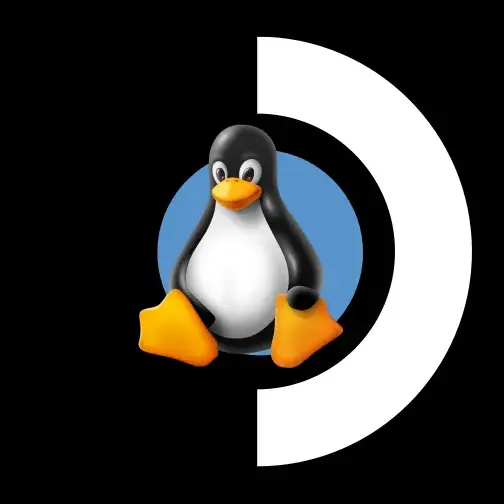

What is(was?) Crimeflare? It’s a great name.
Canadian software engineer living in Europe.


What is(was?) Crimeflare? It’s a great name.
I am terribly jealous. Congratulations on finding a company with a (somewhat) sensible IT policy.


“My Time at Portia”: it’s not exactly the best-coded game ive ever played (weird geometry and animation bugs, and some of the plots feel half-assed) but the world is big, and complicated, and there’s lots of crafting and relationships, and overall Good Vibes. I built a bus stop last night and married a nice girl who sells flowers. I recommend.
It’s currently on sale on GOG for €3.
This is nowhere near the average Debian update experience. Debian is favoured precisely for its stability and simplicity, so if youre getting stuff like this, it’s far from average.
Those errors look like file corruption. Maybe they were partially downloaded or written to a flakey disk, it’s hard to say. I’d also echo the other comment or that Kali (and honestly Debian) are not well suited for gaming due to the distro preference for Freely-licenced software and favouring stability vs quick releases.
It’s fine if you want to experiment and “swim against the current” to do a thing with a tool for which it’s not designed, but turn around and complain as if this is normal behaviour is either dishonest or outs you as someone who doesn’t have the experience required to make such a statement.
Multiple disks with many moving parts, containing 80TB of data on magnetic platters flying at high altitude where they’ll be subjected to far more physical impacts, radiation, and cosmic rays than at sea level.
Yeah, it’s a risk.


They’re all on the high seas and they’re all excellent.
I can’t speak to Lunduke, but dhh is quite the piece of shit himself.


If you build for a containerised environment, standing up your service in Kubernetes with HPA gives you all the scalability (and potentially cost) benefits of serverless without all the drawbacks.
“Oh hi! Here’s some code. I didn’t write it and don’t understand it, but you should totally run it on your machine.”
Does this mean we can finally ditch all those memory-hungry Electron apps?
I love it, and have some feedback of you’re interested:
The bit of information you’re missing is that du aggregates the size of all subfolders, so when you say du /, you’re saying: “how much stuff is in / and everything under it?”
If you’re sticking with du, then you’ll need to traverse your folders, working downward until you find the culprit folder:
$ du /*
(Note which folder looks the biggest)
$ du /home/*
(If /home looks the biggest)
… and so on.
The trouble with this method however is that * won’t include folders with a . in front, which is often the culprit: .cache, .local/share, etc. For that, you can do:
$ du /home/.*
Which should do the job I think.
If you’ve got a GUI though, things get a lot easier 'cause you have access to GNOME Disk Usage Analyzer which will draw you a fancy tree graph of your filesystem state all the way down to the smallest folder. It’s pretty handy.


Plus the FF extension is really full-featured. I can clip in different formats or even take a screenshot if the webpage makes clipping hard.
I didn’t even know there was a Firefox extension! I might give it a look.


I’m afraid I have no idea what an RCS is, but maybe that’s a network/region specific thing? I’m in the UK using GiffGaff (O₂) and the phone, SMS, and data works exactly as well as everyone else’s… which is to say perfectly in most places and sporadically on the train due to the dead zones on the route.


I’m using a Fairphone 4, which is 4 years old at this point (October 2021) and I’m still quite happy with it, but I owned the Fairphone 1 and 2 as well.
In terms of software atrophy, they do offer support for your device for 5 years, which is better than most, and because of its open nature, it’s generally well supported by alternatives like Lineage or Calyx, but yeah, I’m still on Android 13. While I still get regular security patches and haven’t really had a need for an upgrade, there’s no denying that the FP4 is behind.
Of course, it’s also easily repairable, supports an SD card and replaceable battery, so that’s a tradeoff I’m happy with.


I’d rather see a stable OS and ecosystem for good, Free apps that we can flash onto existing devices. I’m quite happy with my Fairphone (repairable! modular! ethical!) and we know that building and marketing a device is painfully expensive.
Let’s make Debian or Arch just work on most phones instead of trying to compete in a saturated market.
I was a Windows user as a kid in the 80s & 90s doing pirate installs of 3.11 and later 95 for friends and family. I got into “computers” early and was pretty dedicated to the “Windows is the best!” camp from a young age. I had a friend who was a dedicated Mac user though, and she was bringing me around. The idea of a more-stable, virus-free desktop experience was pretty compelling.
That all changed when I went to school and had access to a proper “Mac lab” though. Those motherfuckers crashed multiple times an hour, and took the whole OS with them when they did it. What really got to me though was the little “DAAAAAAAAAAA!” noise it would make when you had to hard reboot it. It was as if it was celebrating its inadequacy and expected you to participate… every time it fucked you over and erased your work.
So yeah, Macs were out.
I hadn’t even heard of Linux in 2000 when I first discovered the GPL, which (for some reason) I conflated with GNOME. I guess I thought that GNOME was a new OS based on what I could only describe as communist licensing. I loved the idea, but was intimidated by the “ix” in the name. “Ix” meant “Unix” to me, and Unix was using Pine to check email, so not a real computer as far as I was concerned.
It wasn’t until 2000 that I joined a video game company called “Moshpit Entertainment” that I tried it. You see, the CEO, CTO, and majority of tech people at Moshpit were huge Linux nerds and they indoctrinated me into their cult. I started with SuSe (their favourite), then RedHat, then used Gentoo for 10 years before switching to Arch for another 10+.
TL;DR: Anticapitalism and FOSS cultists lead me into the light.
What exactly is an external drive case? Are you just talking about a USB enclosure for a single drive or something that can somehow hold multiple drives and interface over something more stable than USB?


Joplin will do this for you. It comes ready to sync with all sorts of cloud options, as well as “local folder” which works well with Syncthing. It’s offline-first, cross-platform, and FOSS.
I suspect it’s because they allowed users to select multiple, 'cause if you add all the personal Linuxes together, you get 61% on their own.
Regardless, it’s actually looking really good for Team Free Software.